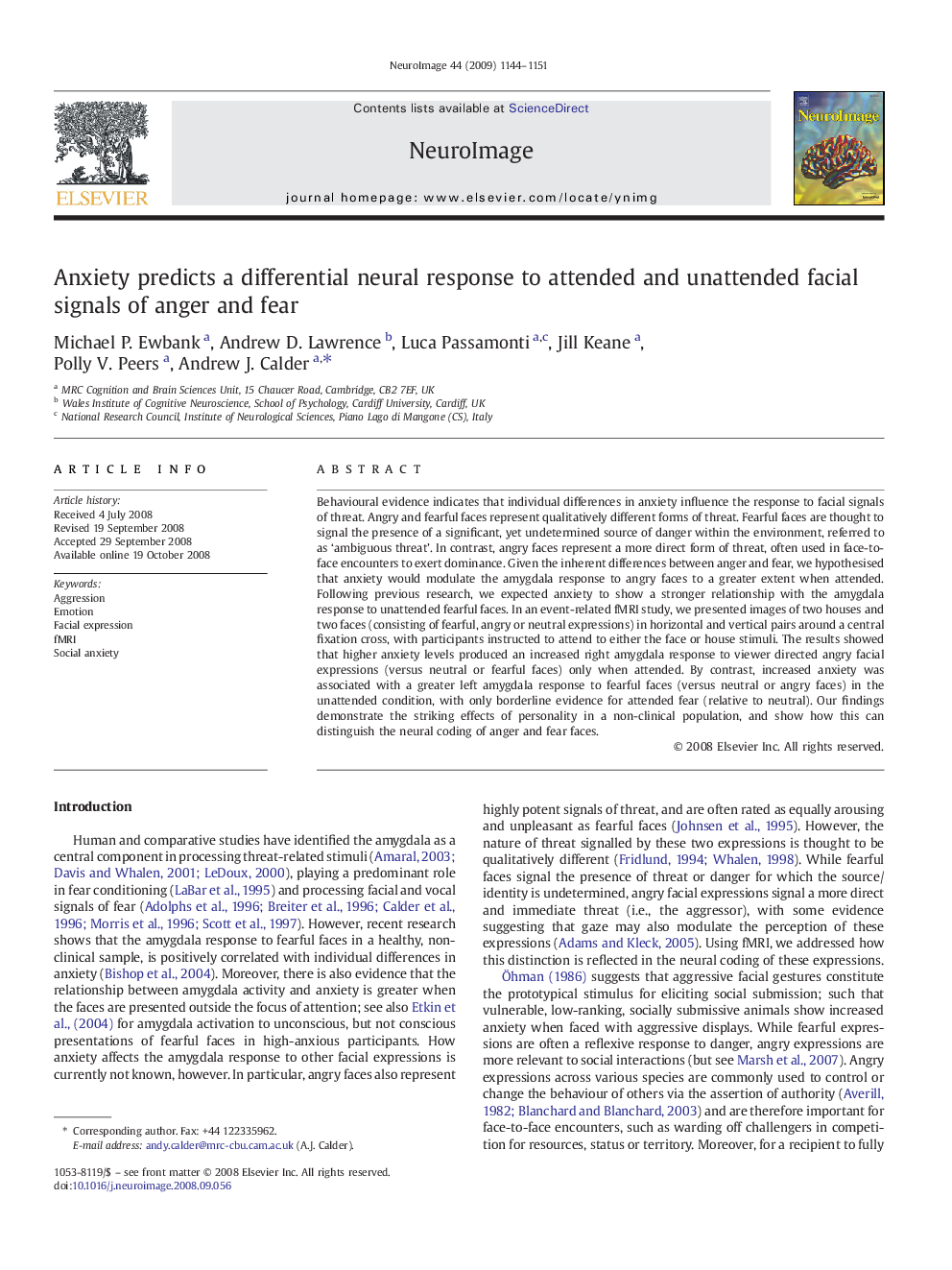| Article ID | Journal | Published Year | Pages | File Type |
|---|---|---|---|---|
| 6038423 | NeuroImage | 2009 | 8 Pages |
Abstract
Behavioural evidence indicates that individual differences in anxiety influence the response to facial signals of threat. Angry and fearful faces represent qualitatively different forms of threat. Fearful faces are thought to signal the presence of a significant, yet undetermined source of danger within the environment, referred to as 'ambiguous threat'. In contrast, angry faces represent a more direct form of threat, often used in face-to-face encounters to exert dominance. Given the inherent differences between anger and fear, we hypothesised that anxiety would modulate the amygdala response to angry faces to a greater extent when attended. Following previous research, we expected anxiety to show a stronger relationship with the amygdala response to unattended fearful faces. In an event-related fMRI study, we presented images of two houses and two faces (consisting of fearful, angry or neutral expressions) in horizontal and vertical pairs around a central fixation cross, with participants instructed to attend to either the face or house stimuli. The results showed that higher anxiety levels produced an increased right amygdala response to viewer directed angry facial expressions (versus neutral or fearful faces) only when attended. By contrast, increased anxiety was associated with a greater left amygdala response to fearful faces (versus neutral or angry faces) in the unattended condition, with only borderline evidence for attended fear (relative to neutral). Our findings demonstrate the striking effects of personality in a non-clinical population, and show how this can distinguish the neural coding of anger and fear faces.
Related Topics
Life Sciences
Neuroscience
Cognitive Neuroscience
Authors
Michael P. Ewbank, Andrew D. Lawrence, Luca Passamonti, Jill Keane, Polly V. Peers, Andrew J. Calder,
